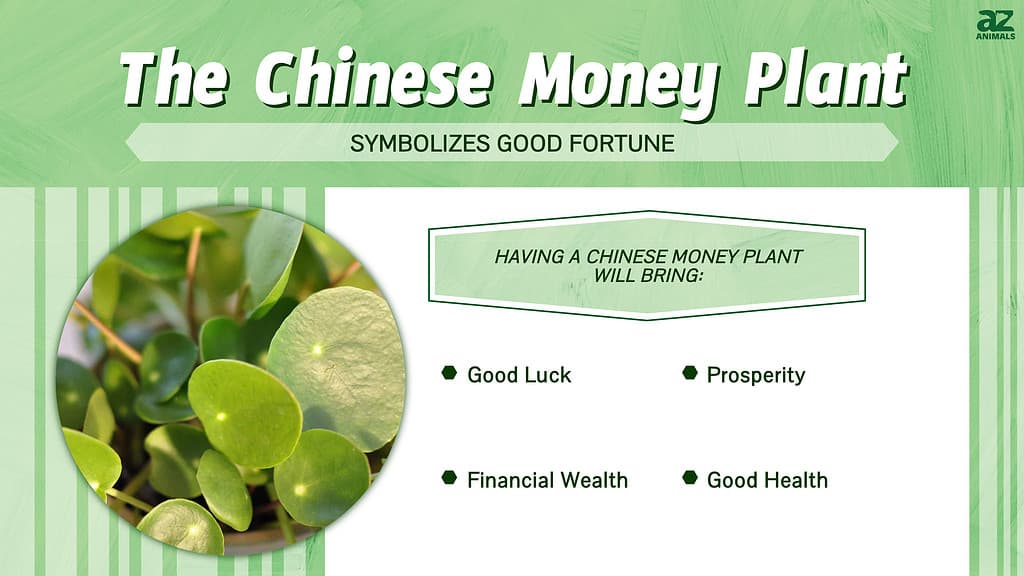
©
As its name suggests, the Chinese money plant (Pilea peperomioides) is native to China. The Chinese have prized Pilea peperomioides for its beauty and the belief that it brings the owner good luck and prosperity for millennia. This trendy houseplant only reached the shores of North America in the early 20th century. These easy-to-propagate plants were popular with horticulturists and hobbyists throughout the ensuing years, only becoming widely commercially available in the 21st century. Keep reading to discover the meaning of the Chinese money plant.
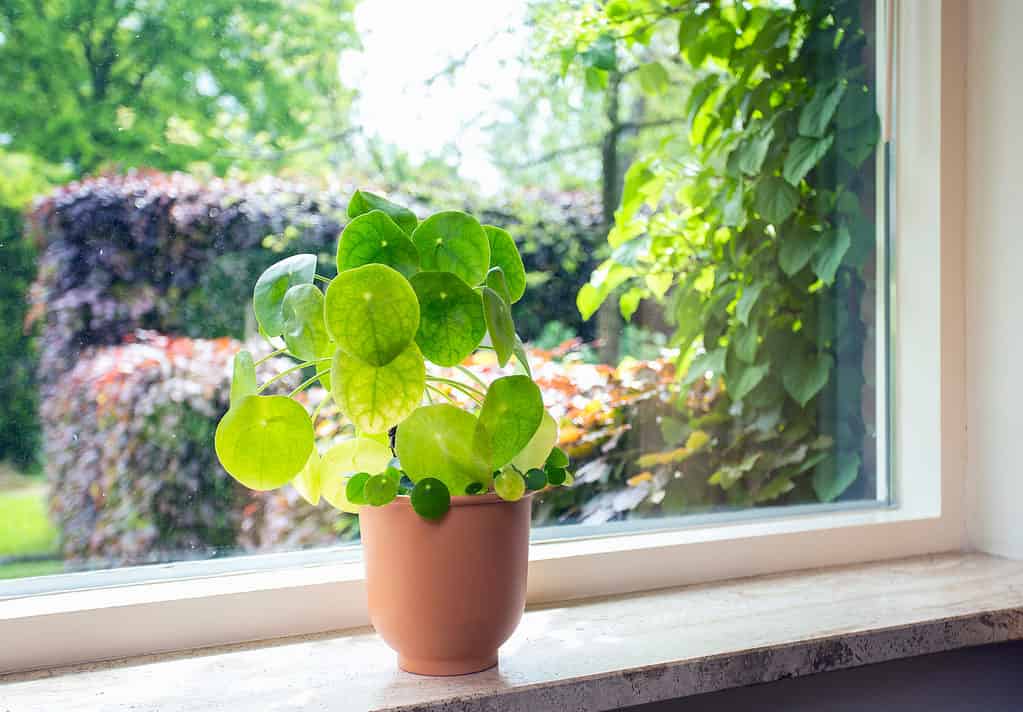
Chinese money plants only reached the shores of North America in the early 20th century.
©A-photographyy/Shutterstock.com
Chinese Money Plant: History
Pilea peperomioides has a fascinating history. Native to China, it has only been known in the Western world since the early 20th century. The Scottish botanist, George Forrest (1873-1932), discovered the plant on a trip to China in 1906 and again in 1910. However, his specimen of Pilea peperomioides wasn’t found for many years. Norwegian missionary Agnar Espegren brought a specimen with him when he returned from a trip to Yunnan, China, in 1945.
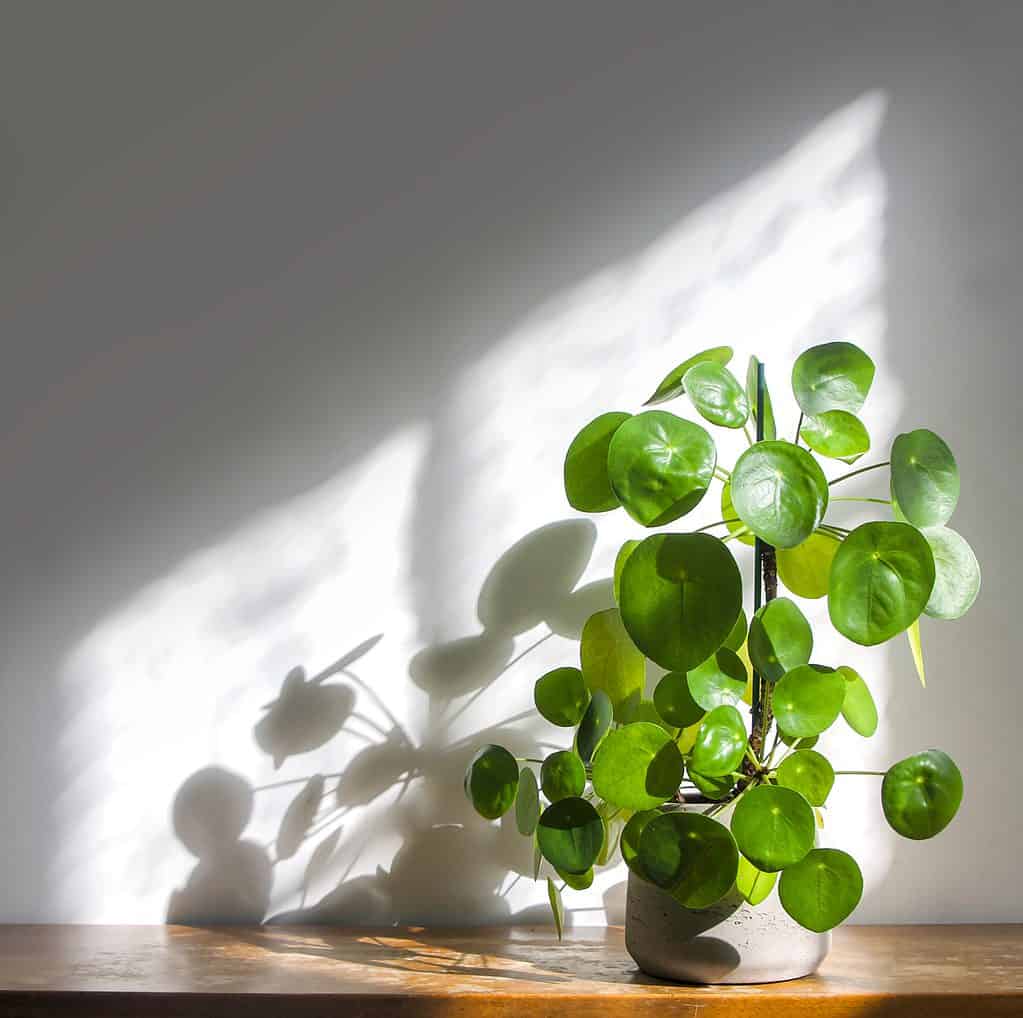
The Chinese prize
Pilea peperomioidesfor its beauty and the belief that it brings the owner good luck and prosperity.
©Kulbir G/Shutterstock.com
Chinese money plants multiply, producing many offshoots around their base. Espegren propagated the plant, sharing it with friends around Norway and Sweden. His habit of sharing the plant provided the nickname missionary plant. Many of the people with whom he shared the plant continued to propagate and share it with their friends, earning the nickname friendship plant. Legend has it that a little girl from Britain brought a Chinese money plant back to the U.K. after a trip to visit her nanny in Norway, spreading it throughout the island nation, and gaining popularity throughout the 1960-70s.
For decades after Chinese money plants had become available in North America, they were difficult to obtain and pricey, up to $75.00 for one cutting, when accessible. Around 2010 Chinese Money plants became widely commercially available in the U.S., significantly lowering their cost. This new kid on the block is popular for a reason. Its shiny coin-shaped leaves provided a showstopping display while adding a pop of color to a room. So, how did the plant become synonymous with luck and prosperity?
Chinese Money Plant: Meaning
Though some believe that the Chinese money plant gets its reputation for bringing good fortune from its coin-shaped leaves, while this is certainly one explanation, there are others.
An ancient Chinese legend has it that the Chinese money plant became a symbol of good fortune when, after a poor farmer prayed for prosperity, he woke to find a Chinese money plant growing in his field. He took the plant home. Soon it began to multiply, so the poor farmer propagated it, selling the cuttings and offshoots at the market. The farmer was soon wealthy beyond belief!

Some believe that the Chinese money plant gets its reputation for bringing good fortune from its coin-shaped leaves.
©Mehta Photography/Shutterstock.com
An urban legend suggests that a young woman who was given a Chinese money plant by her boyfriend wins the lottery! In another story, a young man inherits a substantial sum of money after he purchases a Chinese money plant. Depending on who’s telling the story, the young fella didn’t know the relative existed or wasn’t aware that the relative was ill. In any case, the inheritance came as a surprise. Good fortune doesn’t always involve financial windfalls, however. Stories abound about finding lost objects and winning competitions after acquiring these popular plants.
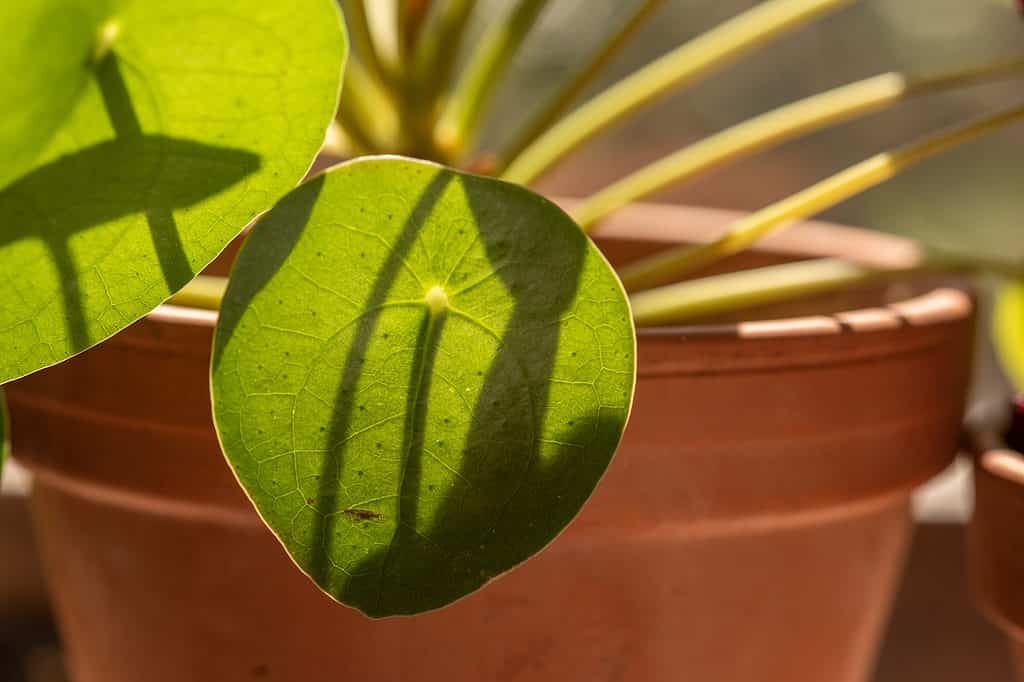
The belief that Chinese money plants shower their owners with good luck and prosperity has been around for millennia.
©Trygve Finkelsen/Shutterstock.com
The Chinese practice of feng shui and the ancient Indian practice of Vastu shastra both connect financial success and well-being with having a Chinese money plant growing in one’s home. Though these plants are relatively new to the U.S., the belief that Chinese money plants shower their owners with good luck and prosperity has been around much longer.
Chinese Money Plant: Health Benefits
As the saying goes, when you’ve got your health, you’ve got just about everything, and the Chinese money plant has you covered there, too! What good would all that newfound wealth and prosperity do for you if you’re not healthy? Chinese money plants are prolific oxygen producers, day and night, purifying the air we breathe. Research suggests that this quality makes Pilea peperomioides an excellent choice for the bedroom and the boardroom.
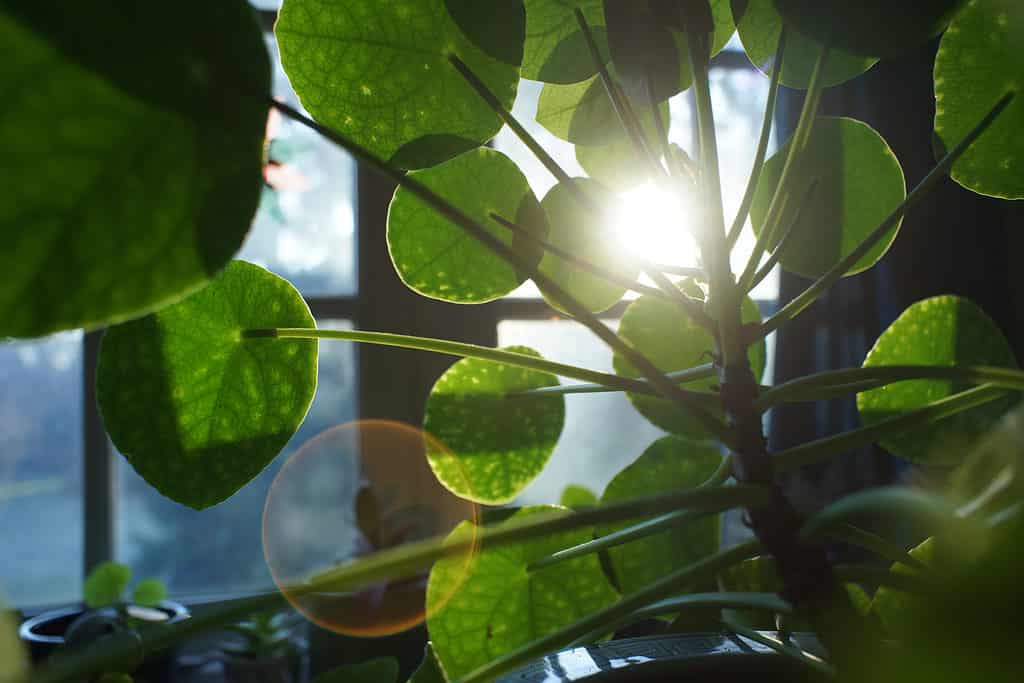
Chinese money plants are prolific oxygen producers,
day and night
, purifying the air you breathe.
©Floris Verweij/Shutterstock.com
Whether you purchase a Chinese money plant for yourself or someone else, and whether you purchase it purely for its aesthetic qualities or for its supernatural ones, you’re bound to come out a winner! Get to know your Chinese money plant better here!
The photo featured at the top of this post is © Pegasene/Shutterstock.com
Sources
- goodlucksymbols.com / Accessed January 4, 2023
- indoorhomegarden.com / Accessed January 4, 2023
- pilea.com / Accessed January 4, 2023
Thank you for reading! Have some feedback for us? Contact the AZ Animals editorial team.







